|
Challenges in running a community based
ecotourism project A case of Tourism for Rural Poverty Alleviation
Programme (TRPAP), Nepal

By RABI JUNG PANDEY
National Programme Manager
UNDP/TRPAP NEP/99/013
Email: rjpandey_trpap@ntb.org.np , rabi@paknajol.wlink.com.np
www.welcomenepal.com/trpap
Highlights
Part 1. - CBET General Prospects
Part 2. - A Case of TRPAP
Part 3. – Programme’s major intervention
Part 4. - Challenges Faced
Part 5. - Strategies Undertaken
Part 6. - Lessons learned
Part 1 Community Based
Ecotourism:
General Prospects
World Vision
Tourism is a growing industry throughout the world, though benefits
are often spread unevenly
Tourism that is developed in a sustainable manner may assist
communities to increase their incomes, become more self-sufficient
and combat poverty
A Challenge for World Vision
In light of the continuing growth of tourism, how to engage local
community in this sector is a challenge
What every country desires?
sustainable community-based ecotourism as a prospective component of
development for community & key stakeholders
Emerging Global Issues
Increasing application of “Fair Trade” principles to tourism
The rise of “responsible tourism” & associated accreditation
Increasing Tourism Concern globally (competition)
What we have understood about
Community-Based Ecotourism?
Tourism designed & developed to be sensitive to the needs of the
community & enhance living standards, particularly amongst the
poorest & most marginal groups
CBET: an Ally in the Fight Against
Poverty
Can provide links mainly to :
Education & training
Empowerment of women
Health provision
Access to micro-credit facilities
Information technology
Part 2 A Case of TRPAP
Executing Institution : GoN / MoCTCA
Managing Institution : UNDP / NEX
Technical and Financial
support : UNDP,DFID, SNV N
Close Partnership with : NTB, DNPWC
Project Sites : Over 700 Settlements
within 48 VDCs at 6 Districts
Total Households Covered : 28,337
Expected Beneficiaries : 160,732
Programme Goal
To contribute to the poverty alleviation objective of the government
through review and formulation of policy and strategic planning for
sustainable tourism development that are pro-poor, pro-environment,
pro-rural communities and pro-women.
Programme Objectives
- to demonstrate sustainable tourism development models for policy
feedback
- to develop institutional mechanisms for the sustenance of tourism
development in Nepal, and
- to support the government to review and formulate sustainable
tourism development policies and strategies and integrate them with
wider conservation objectives
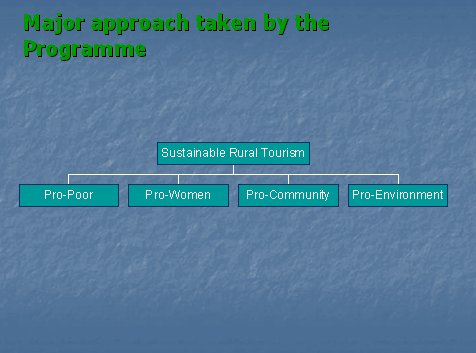
Part 3
Programme’s major interventions
a. Social Mobilization
Formation of
- CO 781
TM 15565 (F 7940, M 7625)
- FG 178
TM 2271 (F 960, M 1311)
Use of
- APPA 332 (Redone) developed VTDPs
HH Covered 24792
- TEAP (1o1o)
Population Covered 27304 (F 12270, M 15034)
b. Capacity Enhancement
Vocational Training Conducted 361
Total Trainees 9201 (F 3574, M 5627)
MCET conducted 153
Total Trainees 3859 (F 1668, M 2191)
Human Resources developed
conducting skills trainings and orientation programmes, such as :
- awareness raising (TEAP)
- hotel,lodge management
- food and beverage preparation (including menu selection)
- sanitation / health and hygiene
- guiding / portering
- HIV/AIDS
- tourism health and safety
- hospitality management
- agriculture / horticulture
- gender empowerment
- handicrafts
training for Programme staff, such as :
- orientation training on village-based sustainable tourism
development;
- Tourism System Analysis and Development approach training;
- Social mobilisation and tourism/participatory analysis tools
training (APPA and Development wheels);
- Gender and tourism assessment training;
- Participatory tourism development and management planning
training;
c. Small Scale Tourism Infrastructure Developments (38 types)
Protection of natural & cultural heritage, and environment
Tourism Infrastructure development
Infrastructures developed
- upgrading trekking trails;
- upgrading monuments, sites of cultural heritage and natural beauty
and recreational areas;
- establishing a MUVC, VIC, museums;
- supporting energy saving activities;
- developing other small scale infrastructures;
d. Access to Capital
Provided Venture Capital Funds at nominal interest rate to start
tourism enterprises - 653
VCF – Rs 102,23,100
Saving-Rs. 99,41,098
Credit –Rs. 66,55,591
e. Institutionalization & Linkages
(backward & forward)
TRPAP has laid out the foundations for micro, meso and macro level
institutions-CO(781), FG(178), STDC(46), STDS(6), STDU(1), DTCC/STCF
(6)
Close coordination with DNPWC & the National Parks and establishment
of a Tourism Unit within the National Park office.
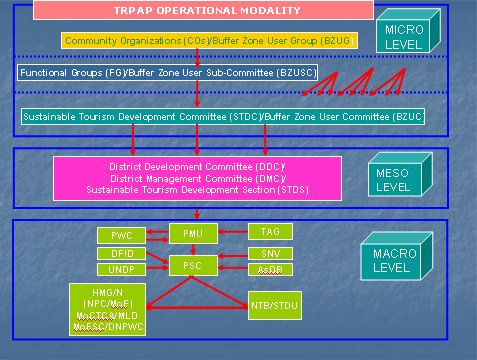
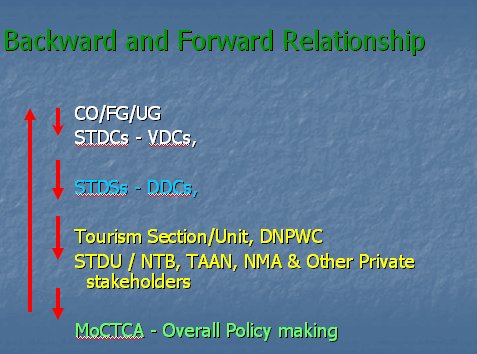
f. Intervention on Policy developments
Reviewed existing tourism policies, acts, regulations etc
Formulated Pro-poor Tourism Policy, long term National Tourism
Strategic Plan and Strategic Marketing Plan for MoCTCA and NTB
SNP Management Plan and Tourism Plan
SNP Regulations and IEE Report prepared
Guidelines for operations developed – STDF, STVF, STDS, STDC, Waste
Management, MUVC/Museum,
District Tourism Plans, SRT Plans prepared
g. New Rural Tourism Products
Taplejung :
Kanchenjunga: Pathibhara & Limbu Cultural Trial
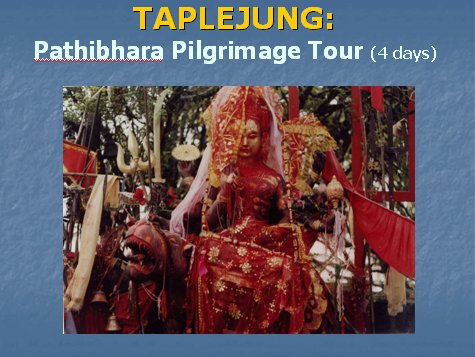
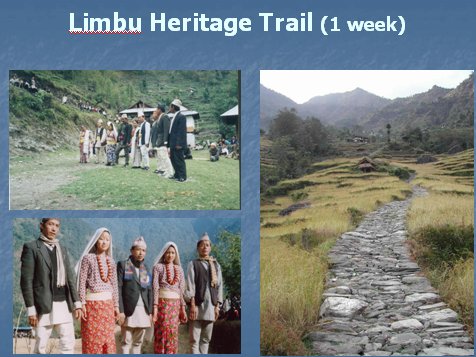
Solukhumbu:
A cultural Journey to Mt. Everest
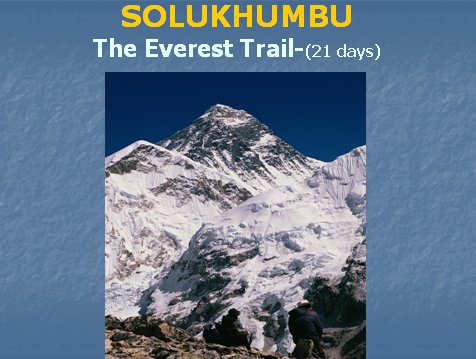
Dudhkunda – Pikey Cultural Trail
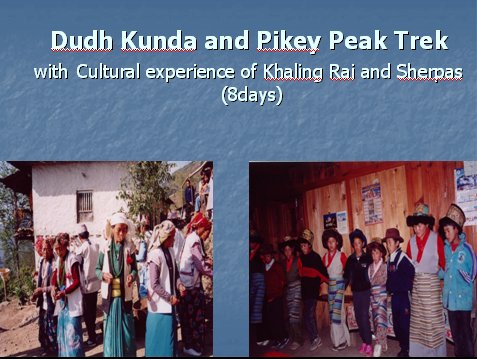
Rasuwa :
The Land of Tamangs – Tamang Heritage Trail
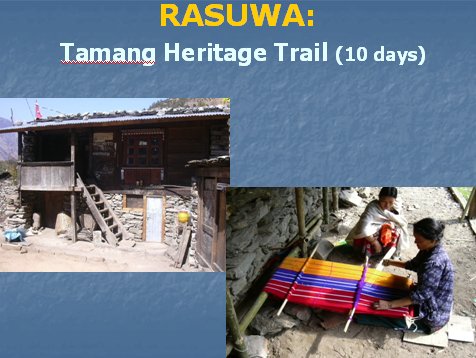
Chitwan :
Culture & Wilderness, Chitwan Chepang Hill Trail
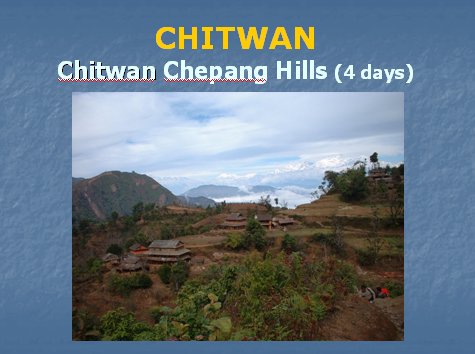
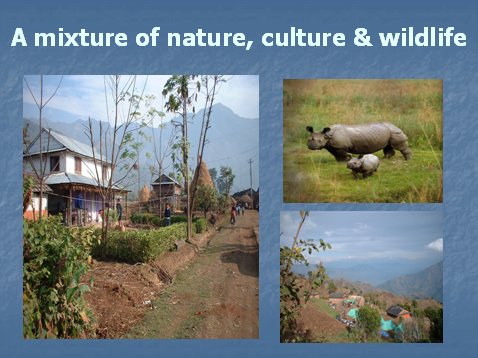
Rupandehi :
Lumbini Buddhist Circuit Tour, Village Walks
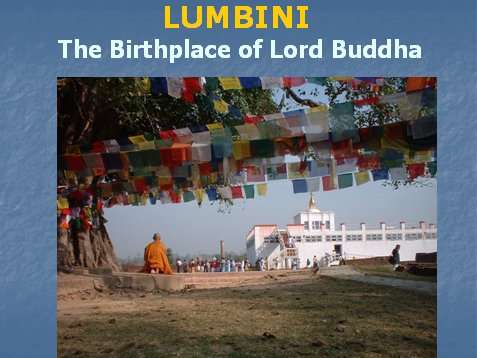
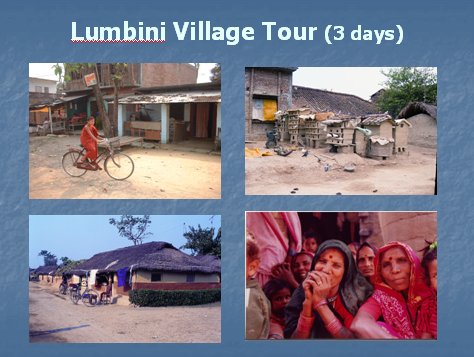
Dolpa :
The Dolpa Experience Circuit
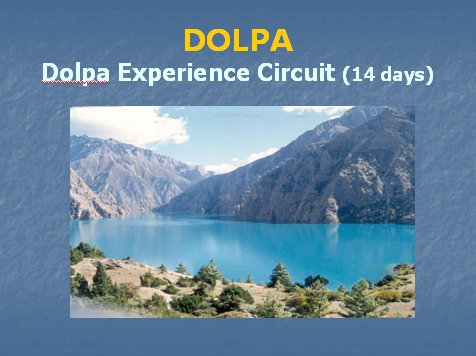
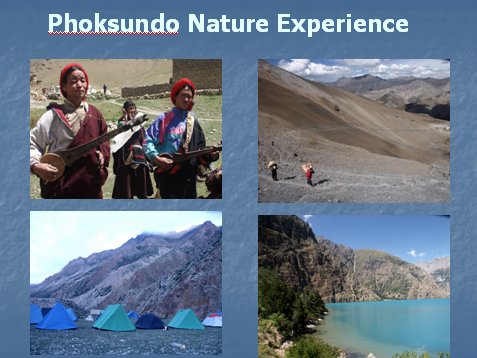
h. Marketing of the New Rural Tourism Products
Market Research
Familiarization visits for Journalists and Tour Operators/ Trekking
Agents
Promotional materials and documentaries (Design, developed and
distributed through NTB, TAAN and tourism associations)
Participation in national and international tourism mart and fairs
Promotional Activities Undertaken
Brochures
Posters (Promo/Educational)
Promotional Documentaries/VCD/DVD
Postcards
Guide Books
Trekking Maps
Signage at sites
Training Manuals
Study/Survey Reports
Policy, Plans and Strategies
Websites www:welcomenepal.com/trpap
Fam trips (International/Domestic)
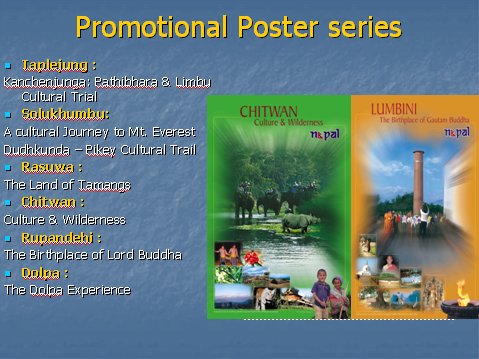
Brochures
Taplejung :
- Treasures of Taplejung
- Pathibhara Devi (Nepali)
Solukhumbu :
- A cultural Journey to Mt. Everest
Rasuwa :
- Himalayan Heritage of Rasuwa,
- Home-stay in Briddhim
Chitwan :
- Chitwan Hills – Cultural Adventure,
- Chitwan Chepang Hills Trail (English + Nepali)
Rupandehi :
Lumbini : The Birth Place of Lord Buddha
- Birds of Lumbini
Dolpa : The Dolpa Experience
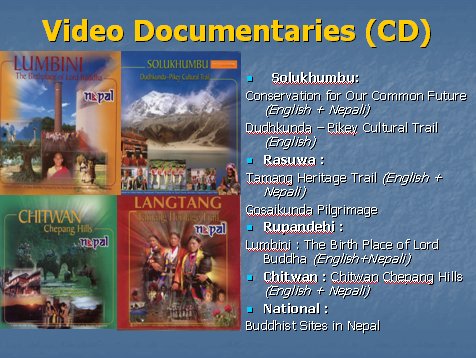
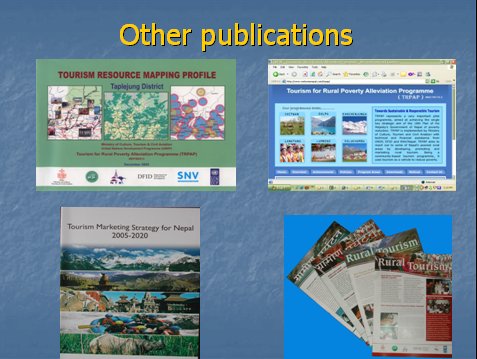
Part 4
Challenges Faced
Challenges Faced
- National and international security/conflict issues
- Poor accessibility at the program sites
- Poor communication facilities at some program areas
- Difficulty to bring woman in frontline
- Time lag - to demonstrate desired impacts of the program
- Absence of local elected body
Conflict /Challenges
- Implementation
- CO mobilization
- Loan disbursement
- Training
- Decreased in tourist arrivals
Outcome/Impact
- Marketing
Part 5
Strategies undertaken
Strategies undertaken
- Watched and waited
- Initiated by community and programme personnel at local level
- Adopted mechanisms for better transparency (public auditing)
Part 6 Lessons
learned
Lessons learned
- Infrastructure must benefit local people
- All targeted market segments should adhere to the principles of
community-based tourism
- For SRT there must be active & prominent involvement of local
people/businesses
- Tourism activities must supplement to farmer’s incomes,
particularly in the off season
- Tourism must attempt to share the benefits as widely as possible
with the most marginal members of the community
- Community-based ecotourism must be part of an overall tourism
development plan (micro to macro level)
- Products developed must meet the needs of both visitors & locals
(win win situation)
- Assistance is required in all phases of product design,
development, marketing & operation
- Most of all, the local population must be willing to share their
resources (tradition, culture, lifestyle) with tourists
Finally We hope TRPAP,s activities and its holistic approach is
playing significant role in achieving MDG’s
|


















